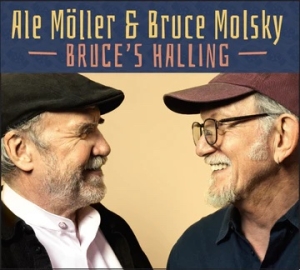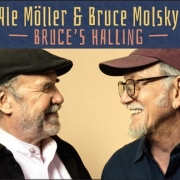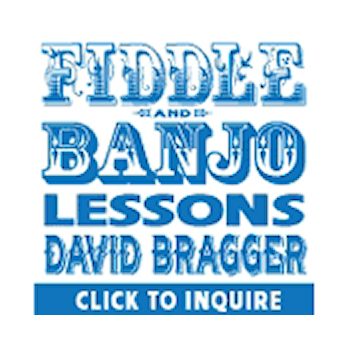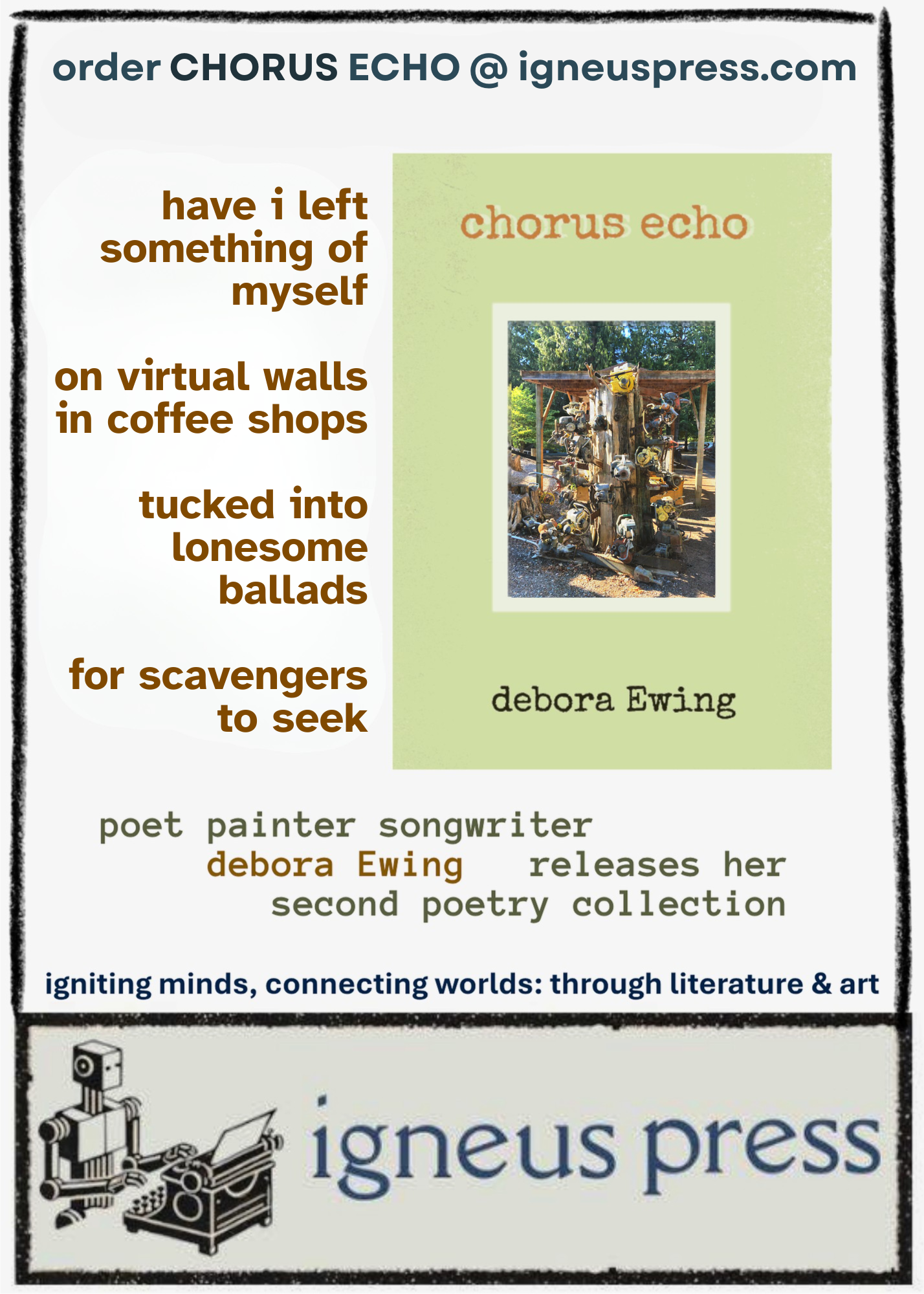Bruce’s Halling by Ale Möller & Bruce Molsky
 Ale Möller and Bruce Molsky met in the lobby of a Swedish hotel and have been playing together ever since. I saw them once as a duo at Berkeley’s Freight & Salvage years ago. Bruce’s Halling was recorded after a May 2024 tour they did in Sweden. Halling is a lively dance tune written in a major key usually in ²/₄ time and usually played on the Hardanger fiddle. The recording has at least two tracks that Bruce had previously recorded solo: “Brothers and Sisters” (Bruce’s composition) and “Peg and Awl,” but these take on a different character when Ale’s custom-made drone mandolin is added. Indeed, this is two master musicians from different traditions finding ways to complement each other so that one plus one is much more than two. And while they are at it, they find many points of contact between traditional American and Swedish music.
Ale Möller and Bruce Molsky met in the lobby of a Swedish hotel and have been playing together ever since. I saw them once as a duo at Berkeley’s Freight & Salvage years ago. Bruce’s Halling was recorded after a May 2024 tour they did in Sweden. Halling is a lively dance tune written in a major key usually in ²/₄ time and usually played on the Hardanger fiddle. The recording has at least two tracks that Bruce had previously recorded solo: “Brothers and Sisters” (Bruce’s composition) and “Peg and Awl,” but these take on a different character when Ale’s custom-made drone mandolin is added. Indeed, this is two master musicians from different traditions finding ways to complement each other so that one plus one is much more than two. And while they are at it, they find many points of contact between traditional American and Swedish music.
The recording opens with a powerful medley of “Zolly’s Retreat” from Clyde Davenport and “The Boatsman” from Marcus Martin.
Next is what they call the “Dusty Möller Set” which goes from “Dusty Miller” to “Shelving Rocks” to “Rebel Raid” from John Hannah via Geoff Goehring.
Then they combine Cajun fiddler Wayne Perry’s “Acadian Waltz” with Ale’s composition, “Oddish Polska.”
Ida Craig from North Carolina is the source of “Sit Down Servant” which is combined with another of Ale’s compositions, “Bruce’s Halling,” which is the title cut.
Ale wrote “The Fox” with Mats Eden, and they combine that with John Salyer’s “Duck River” to make the hard-driving “Fox & Duck” medley.
The next medley combines the Swedish dance tune “Venjan” (played on the whistle with Bruce on guitar) with “The Time Has Passed.” The latter is a version of “Black Is the Color of My True Love’s Hair” and has phrasing that matches “Venjan.”
The Métis “McKaye’s Old Four Hand Reel” from Fred McKaye is medleyed with “Gammal Bröllopsposka,” which means Old Wedding Polska.
Next, they combine the Norwegian “Homslien” with Salyer’s “Kentucky Winders,” which is a relative of “Big Scioty.”
Bruce’s guitar piece “Brothers and Sisters” was inspired by an LP, “Africa in Revolutionary Music,” released by an organization I used to belong to, Liberation Support Movement. Bruce has recorded it at least twice previously and solo, but now Ale adds his plaintive improvising whistle to the mix.
Bruce learned “Peg and Awl” from Hobart Smith. As on his previous recording, Bruce adds two notes on the fiddle to the note he is singing to fill out the chord. Here Ale mostly fills out the lower register with his drone mandola.
The last track is “Throw the Old Cow over the Fence” paired with “Whoa Mule.” It begins with solo fiddle and then rises to new heights with the addition of the mandola.
You may be familiar with Bruce’s fiery fiddling, but Ale’s drone mandolin fans the flames even higher. Bruce is known for the pulses in his fiddling; Ale finds those pulses and reinforces them ably.
This CD is sold out, but you can get a download here. The download includes a PDF of extra content including tracklist, liner notes, and personal reflections on the songs from Bruce and Ale.







